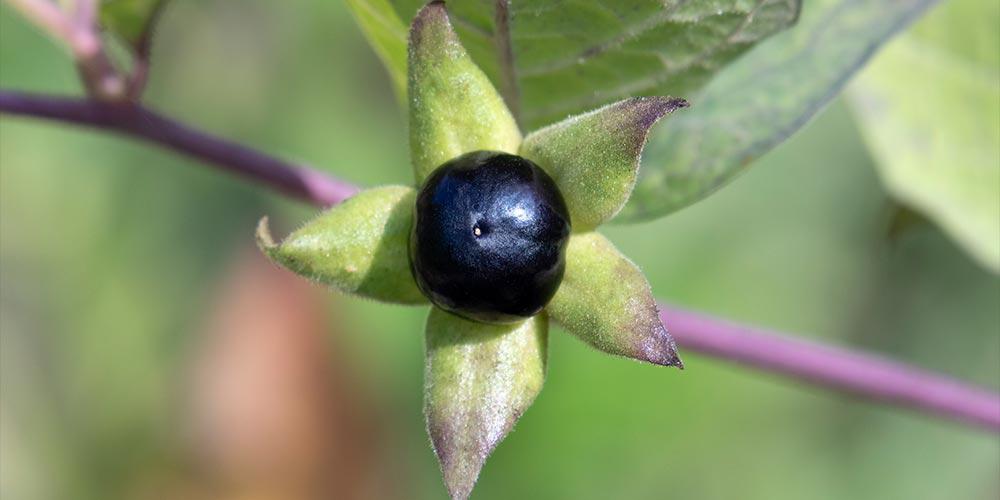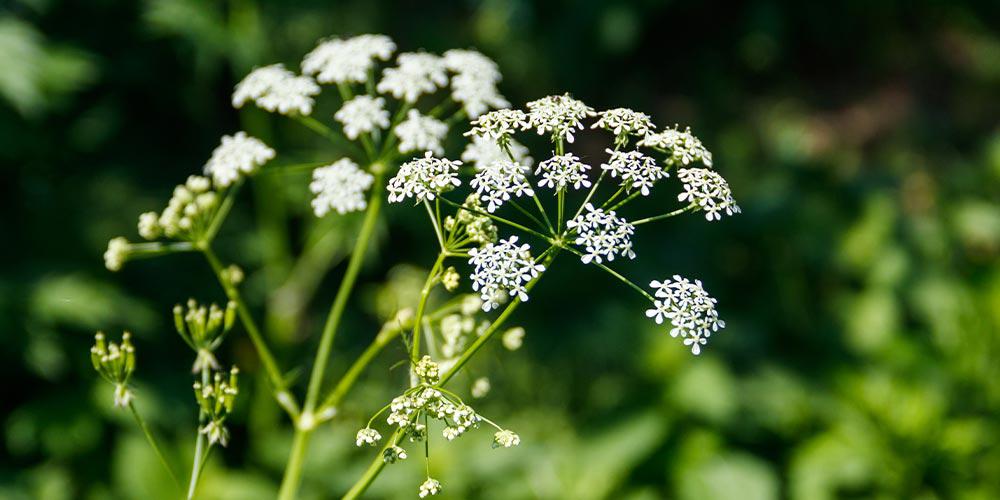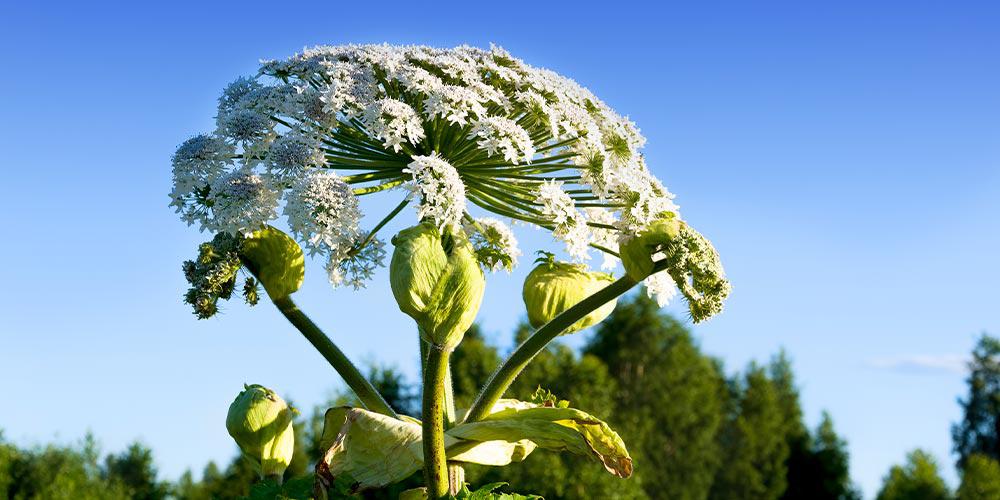7 World’s Deadliest Plants
Last Updated :
16 Feb, 2024
Since ancient times, people have used plants as a source of food and a remedy for illnesses. Besides those some plants can be lethal to consume. Like other living things, plants also have natural defences that assist protect them from all the harmful predators that might try to eat them. Some plants contain the deadliest compounds that, when consumed, can cause us to get severely unwell or even die, in addition to stinging spikes and thorns.
Deadliest plants have caused human deaths throughout history, including in 399 BCE, Socrates‘ death from a poison hemlock and babies’ unintentional use of lethal nightshade. Plants have evolved a variety of cunning defenses against their enemies. Unfortunately, a few of these chemical defenses can hurt people by irritating their skin. Some of the variety of plants may appear to be dangerous, but some of them contain some of the worst toxins ever discovered and they also have deadly flowers.
7 World’s Deadliest Plants
The top seven poisonous plants in the world are listed below.
1. Deadly Nightshade

Deadly Nightshade
Deadly nightshade, also called Atropa belladonna, is super poisonous and one of the most dangerous plants around.
- Where it lives: You can find this scary plant in places like Britain, North Africa, Western Asia, and even parts of the US and Canada.
- Tomato Family Relative: Believe it or not, this deadly plant is related to your favorite vegetables like tomatoes, potatoes, and eggplant!
- Deadly and Useful: Even though it can kill you, nightshade has been used in medicine for a long time.
- Looks Scary: Imagine a plant up to 5 feet tall with dark green leaves and bell-shaped purple flowers. That’s nightshade!
- Deadly Poison: This plant makes a toxin that messes with your brain and causes your muscles to stop working properly.
- Watch Out for Symptoms: If you eat nightshade, you might get a headache, your eyes will get really big, you won’t be able to see well, and you’ll feel confused.
- A Few Berries Can Kill: Just a couple of nightshade berries can kill a young child, and adults need 10-20 to be in danger.
2. Tobacco (Nicotiana tabacum)
.jpg)
Tobacco (Nicotiana tabacum)
Surprisingly, one of the most popular plants, grown all over the world, is also highly poisonous: tobacco. In 2020, an estimated 22% of the world used it!
- Poison in Leaves: Despite its popularity, tobacco leaves contain high levels of nicotine and anabasine, both harmful alkaloids.
- Fatal Toxin: Tobacco directly, if swallowed, can even be fatal, acting as a heart toxin.
- Addictive Trap: But the real danger lies in nicotine’s addictive power, keeping users hooked on tobacco products.
- Making it “Smoother”: To mask its harshness, tobacco companies add ammonia compounds, creating a “smoother” experience for smokers.
- Even Raw Leaves Kill: Uncooked tobacco leaves can be deadly, causing rapid breathing, nausea, vomiting, pain, sweating, and increased heart rate/blood pressure. The fatal dose from chewing or swallowing tobacco is low.
- Smoking Risks: Inhaling nicotine is also dangerous. For adults, 50-60mg/kg can be fatal. Smoking can cause sweating, sleepiness, tremors, confusion, vomiting, seizures, and even death.
3. Water Hemlock

Water Hemlock
This deceptively beautiful wildflower, linked to the poison hemlock allegedly used for Socrates’ execution, is considered North America’s most hazardous plant due to its extreme toxicity.
- Beware the “Poison Parsnip”: This member of the carrot family, resembling celery or edible parsnips, tragically gets mistaken for something harmless.
- Death in a Bloom: Cicutoxin, a potent toxin found in all parts of the plant (especially concentrated in spring roots), unleashes a deadly grip on the nervous system when consumed.
- Swift and Brutal: Within hours, confusion, tremors, nausea, vomiting, and stomach pain can escalate to seizures, respiratory failure, or cardiac fibrillation, leading to death.
- Don’t be Tempted: This is not a culinary adventure. Consuming any part of the plant triggers cicutoxin, a powerful neurotoxin. It wreaks havoc on the central nervous system, causing nausea, abdominal pain, breathing difficulties, kidney failure, irregular heartbeat, tremors, convulsions, and ultimately, death.
- Cattle Beware: The toxin’s potency is not limited to humans. Livestock ingestion has led to fatalities in as little as 15 minutes.
4. Castor Oil Plant
.jpg)
Castor Oil Plant
The seemingly harmless castor bean plant, source of castor oil, holds a terrifying secret – ricin, a toxin deadlier than cyanide, strychnine, and many snake venoms.
- Poison in Seeds: Ricin lurks inside the plant’s seeds, disguised in their pretty red or purple coat. Even the leaves may carry some of this deadly powder.
- Slow and Cruel Death: Ingesting ricin is no quick exit. Its gruesome effects, internal bleeding, nausea, vomiting, cramps, and kidney failure, take nearly ten days to unfold.
- Cell by Cell: Ricin sabotages the very engine of life within human cells, disrupting vital chemical processes. This slowly shuts down organs, leading to painful degeneration and death.
- Beyond the Plant: Sadly, ricin’s potency attracts misuse. Its powder form has been used in acts of terror and poisoning.
5. Abrus Precatorius (Rosary Pea)
.jpg)
Abrus Precatorius
Crab’s eye, a graceful vine native to Indonesia but growing worldwide, may be the deadliest plant on Earth. Don’t be fooled by its delicate appearance – within its seeds lies a hidden killer.
- Deadly Seeds: These captivating orange-red seeds with a single black spot, often used for jewelry, contain the toxin abrin. Abrin is a potent poison, even 75 times more lethal than ricin.
- Silent Killer: The hard shell protects abrin even through the digestive system. Just three micrograms, about the size of a few grains of salt, can kill an adult if the seed is bitten or scraped.
- Jewelry with a Price: Even ornamental use is risky. Tragically, jewelry makers have died from abrin exposure after pinches from drill bits while crafting beads.
- Stay Informed: The beauty of crab’s eye masks its hidden danger. Avoid contact with any part of the plant, particularly the seeds, and educate others about its potential lethality.
6. Cerbera odollam (The Suicide Tree)
.jpg)
Cerbera odollam
The Cerbera odollam tree, nicknamed the “suicide tree,” bears striking green and orange fruits resembling mangoes. Don’t be fooled by their appetizing look, as the seeds inside hold a deadly secret.
- Deadly Duo: These seeds contain potent toxins, strychnine and brucine, capable of killing an adult with just 30 milligrams – about the size of a few grains of sand.
- Agonizing End: Ingestion triggers violent convulsions due to the toxins attacking the nervous system. It’s a painful and terrifying way to die.
- Tragic Reality: Over 530 poisonings in Kerala, India, have been linked to this tree, many sadly self-inflicted. Its accessibility and notoriety for lethality make it a readily available tool for despair.
- A Lethal Meal: In some cases, victims separate the seed kernel from its tough husk and mix it with sugar, creating a deceptively sweet but fatal final meal.
7. Giant Hogweed

Giant Hogweed
The tall plant known as giant hogweed may reach an astounding height of five meters. Its stem is covered in tiny reddish-purple patches and whisker-like hairs. It produces a one-meter wide, white flower with an umbrella-like shape from June to August.
- Appearance: Grows up to 5 meters tall, thick stem with reddish-purple spots and tiny hairs, large white flowers in June-August.
- Danger: Poisonous sap causes severe skin blisters worsened by sunlight, potential for scarring and blindness.
- Prevention: Avoid touching the plant, keep children and pets away, report sightings to local authorities.
- If exposed: Wash affected area immediately with soap and water, cover with clothing, seek medical attention for blisters or other symptoms.
Deadliest Plants- FAQs
What is the Most Deadly Plant in the World?
Deadly Nightshade has tiny, tubular-shaped, reddish-purple blooms, the berries are the most dangerous component of the plant. The atropine in belladonna affects the neurological system and can make it impossible for the body to control breathing and heart rate, which can result in death.
What Plant Kills the Fastest?
It is difficult to identify a single plant as the most deadly plant, as different plants can be poisonous or harmful in different ways. Some plants may be more toxic than others, while others may cause harm through physical contact or allergic reactions. Some plants may also be more poisonous when consumed in large quantities or over a long period.
What is the Deadliest Plant to Touch?
Giant hogweed is the most dangerous plant to handle. It contains toxic sap that can cause serious burns and blisters when it comes into contact with the skin. Giant hogweed is most commonly found in the northeastern United States and southeastern Canada.
What is the Deadliest Flower in the World?
Nerium oleander, the killer with a lovely aroma. One of the most dangerous plants in the world is the exquisite Nerium oleander, whose flowers are scarlet, magenta, or creamy white. If swallowed, the. Although it is invasive in North America, it is native to Asia. Giant hogweed exposure can result in blindness, severe skin and eye irritation, blistering rashes, long-lasting scarring, and irreversible scarring.
Like Article
Suggest improvement
Share your thoughts in the comments
Please Login to comment...